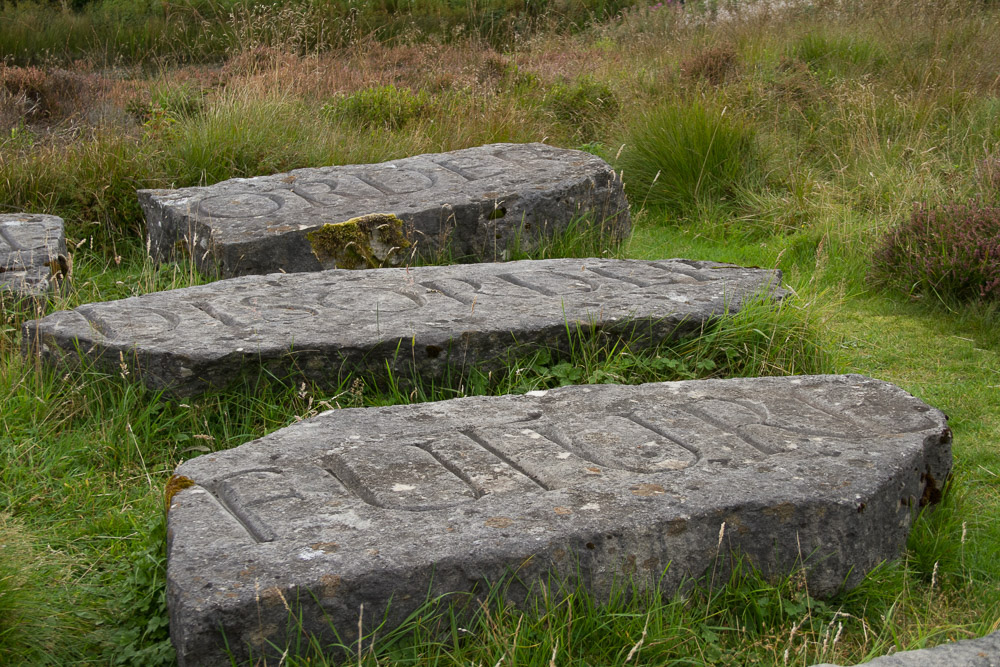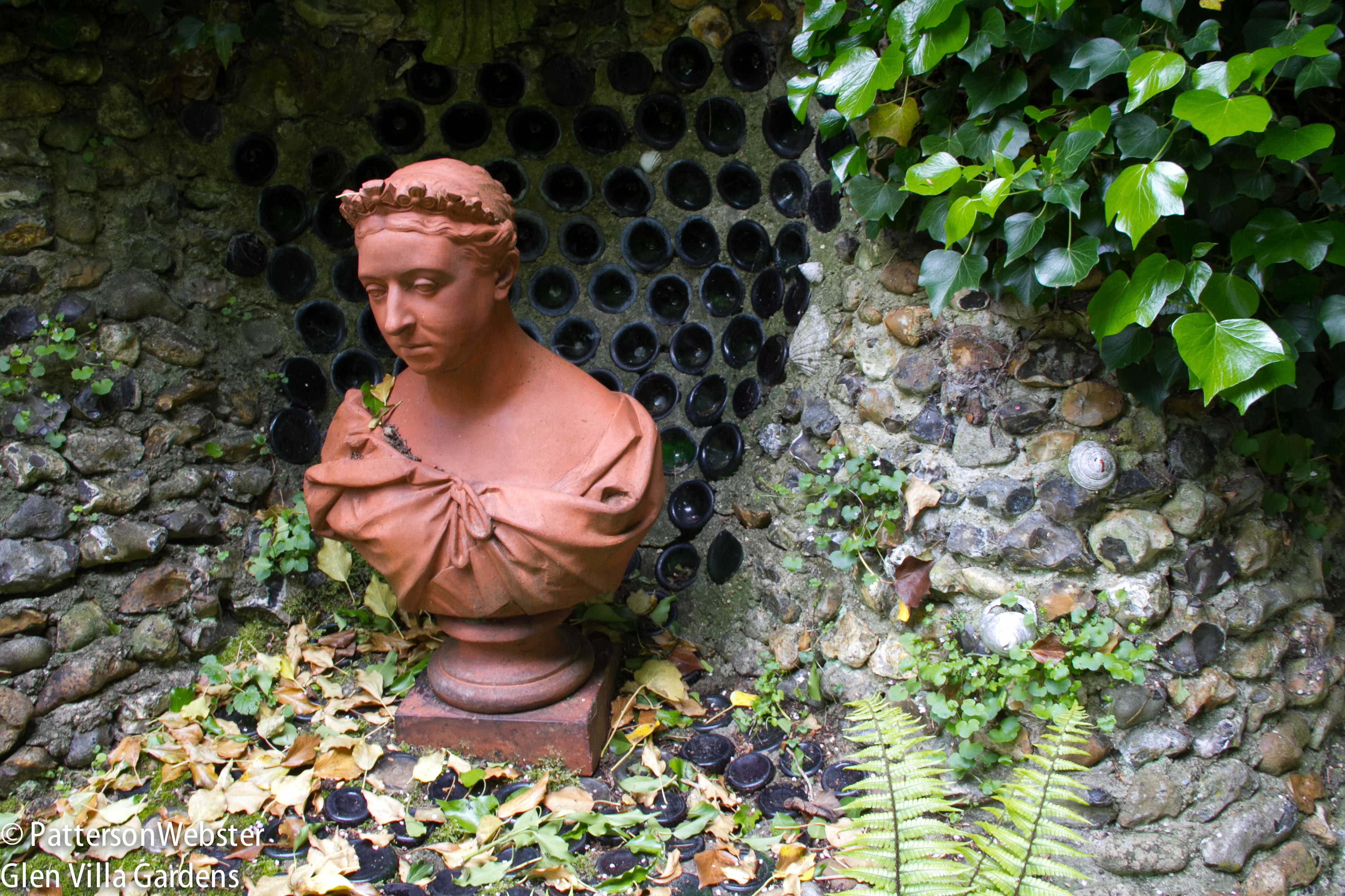Do you pay attention to garden trends or do you think they are a pile of baloney?
Every year about this time, I read an article telling me what’s in and what’s out. Hot new plants are described. I read that there’s a colour I can’t live without, or that shrubs are making a comeback. (When did they ever go away?)
These articles appear in magazines, newspapers and on-line sites in countries around the world. Sometimes they are based on surveys, sometimes on opinions, sometimes on catchy phrases. Alliteration abounds. As do odd conclusions.

I lifted this photo from an on-line article that ran in the English newspaper, The Daily Telegraph.
The cut-line on the photo reads, “This year, look out for cacti, price wars and carrot yoghurt.” What? I only look out for cacti to avoid being pricked. As for carrot yoghurt…
So are journalists telling us something significant in their annual trends reports or are these pieces just lazy fallbacks?
In the U.S., Garden Design magazine says that natural materials are in, which seems less like a trend than a necessity in a garden. Natural dye gardens, where plants are used to make dyes for colouring textiles, yarn, and clothing, are also touted. But who has the time (or inclination) to revive what sounds like a 60s throw-back, and not a very interesting one at that?
In England, the Daily Telegraph doesn’t stop at the standard top ten trends but doubles up (doubles down?) to 20. New plants are there (natch) along with back to the basics. Add blander brassicas and I scratch my head. Which is it to be, novelty or the fundamentals, the exciting or the unobjectionable? Or am I being picky to think there’s a disconnect?

Order, Disorder, Future: is this a disconnect? And can you arrange the words at Little Sparta to say whatever you want them to say?
What constitutes a trend, and whose views determine what is or isn’t? Garden Design consults landscape architects and designers. The English magazine Gardens Illustrated adds a horticulturalist, a critic and several garden educators. Together they bring many years of experience gathered from different contexts. Should I expect consistency in the trends they report?
(Last year’s Brexit vote is making a mark. Last year Gardens Illustrated consulted garden professionals from the U.K., Germany, Sweden and Chile. This year all were from England.)
Londoners needn’t be good indicators for what is happening in Scotland; the same holds true for gardeners from the east coast to the west. Add national variations to the mix and significant differences should surely occur. To a certain extent they do. Minimalism and simplicity are said to be the trend in Australian gardens, urban jungles in the U.K., and mixing the old with the new in the U.S.

Recycled wine bottles provide a shiny backdrop to a bust of Queen Victoria at the Gibberd Garden. Does this constitute using the old with the new?
But when overlaps occur, we can begin to pay attention. Whatever the source, and whatever words are used to describe the phenomenon, there is a generalized concern with plantings that accommodate climate change. There is — and has been for some years — an interest in greater biodiversity and sustainability. Attracting butterflies and pollinators, using wildflowers and native plants, turning lawns into meadows, being mindful of the impact of our actions: these are trends that aren’t trendy fashions but essential actions.
Trends or Movements?
You may want to take part in a recent discussion about trends and movements in garden design. The debate focuses on New Perennialism and, specifically, the use of ornamental grasses and the designs of the Dutch plantsman Piet Oudolf as seen on the High Line, Oudolf’s iconic design for the abandoned railway line in New York City.
Tony Spencer started the conversation with a post he titled Tempest in a Flower Pot. The discussion widened with a critical piece written by Bridget Rosewell for the English website ThinkinGardens, The High Line Revisited.
Multiple points of view are expressed with style and passion, and the comments that follow make for provocative reading. Why not chip in?
Happy Birthday to Site and Insight!

This photo appeared in my first blog post, Introducing Glen villa. It shows part of Abenaki Walking, my tribute to the original inhabitants of the land where I live, the Abenaki Indians.
This week I’m celebrating an anniversary. Four years ago I wrote my first blog post and since then I’ve written well over 200 pieces, averaging slightly more than one post per week.
I’ve written about Glen Villa and other gardens in Canada, the U.S., the U.K., Italy and France. I’ve written about people, plants and plans, about art and garden design.. I’ve shared my ideas and I’ve asked about yours.
To the many who have responded to blog posts through comments on this site or less publicly, I send a big thank you. I value your comments and appreciate the time we have spent on line together.





I always enjoy your thoughtful and provocative posts, Pat. Keep up the great work, and here’s to many more years of blogging! Pam/Digging: penick.net
Thanks, Pam. Four years is short in comparison with many garden bloggers but it feels as if I’ve been doing this forever! How long have you been blogging?
11 years this month, Pat. Which amazes me, actually. And it’s had a major impact on my life’s direction over the past decade. Pam/Digging: penick.net
Wow! That is very impressive. I can easily imagine the impact it has had, and the direction it still is pointing.
Hi Pat,
For me there is a distinction between trends, a movement and what is fashionable. Although they all overlap fashion tends to be the ephemeral like the colour of the year. Trends for me have more longevity for example in the 90’s having an english style perennial garden was a huge trend. The magazines were all over it for many years and now it has faded away. Minimalist gardens are currently a trend and probably in part a reaction to complicated fussy perennial gardens and our complicated fussy lives. An example of a movement is sustainable landscaping (Xeriscaping), water retention ideas (ie. rain gardens etc) these are a reactions to changing conditions. When the municipality puts watering restrictions for your landscape you need to find other solutions. Permaculture is a movement and has serious philisophical foundations. Now that being said something fashionable if it is good may become a trend and with time a movement. For me fashionable could be putting mirrors in the garden, I think the next garden trend should be moorish and persian gardens and the best movement to be a part of is doing small things to make the planet healthier.
Myke Hodgins
I agree there is a difference between trends, movements and the fashion of the moment. For centuries gardens have reflected social and economic conditions. More recently, environmental concerns have moved to the forefront — a reaction to changes in the world we live in.
Now, do I want to be fashionable and add a mirror or two to the garden? Having said in a blog post not that many weeks ago that less is more, how can I support a moorish trend ? (ok, I know it’s a bad pun.)
I want to be part of the movement that does small and big things to make the planet healthier.
I dread New Year’s and all those “best of the past year” and “trends” columns. It makes gardening seem as fashion-dictated as couture, which is simply not the case – or shouldn’t be. I will weigh in on New Perennialism on my own blog…. some day soon! 🙂
Can’t wait to read your take on New Perennialism, Janet.
Low-maintenance ornamental grasses became trendy here possibly and have now taken up more turf as they take hold. You could almost say in some cases overgrown too as people here let shrubs turn into trees here in Oak Bay. Deer don’t seem to trim these as well as they do other things. I have enjoyed the last four years of your posts and looking forward to many more. Spring is on its way as signs are beginning everywhere!
Grasses are definitely a lot more popular than they used to be, and far fewer gardeners know how to maintain them.
Lucky you, to see signs of spring. No such luck here.
Congrats on your blogiversity! That’s a lot of posts and ideas. Sometimes (oftentimes?), I wonder why we do this…but I enjoy the connections made, especially on a personal level.
I agree with what you’ve said about articles about trends, but we like to measure ourselves against others and I believe that’s why we find them appealing, if not useful. Opinion pieces, on the other hand, are geared to make us stop and think, see the views of others in a new way, and persuade if they can. Much more useful in terms of communication and contemplation. But of course, no one likes to be preached to, so there’s always that fine line.
To think or not to think. Perhaps that’s the question? (Sorry, I couldn’t help it; it just seemed funny.)
And it was funny, Marian! I agree, we do like to measure ourselves against others. So while I may rail again trends and the articles telling me what they are, or will be, I still read them. And sometimes learn things I didn’t know. Like the notion that many people are favouring cacti in their gardens.
Congratulations on your blog anniversary! I read Tony Spencer’s post and thought he did an excellent job. I think gardening goes a bit deeper than fashion. It’s not just about transitory fads about what looks good, it’s about our relationship with the earth. As Douglas Tallamy says, it’s about bringing nature home.
I agree, gardening goes deeper than fashion. I like the Tallamy quote — have to read his book!
I agree, gardening goes deeper than fashion. Bringing nature home — good phrase. One of these days I’ll get around to reading Tallamy’s book.
Happy Blogaversary, Pat! My garden life has certainly been enriched by Site and Insight. As for garden trends, in my gardening as in my clothing choices, I tend to ignore the latest trends in favor of the tried and true classics. I think you’re right, though, to distinguish trends from movements. I am always happy to learn new strategies for ecologically sound gardening (e.g., Tallamy’s emphasis on native plants or Rainer and West’s strategy of planting in layers).
Thank you for the compliment, Jean. I can’t think of a nicer blogaversary present.
I usually glance at these kind of articles and then ignore them. Serious gardeners do what we want to do and grow what we want to grow.
I sometimes glance, more often read, then scratch my head. Trends don’t appeal to me — I’d rather find my own path, and make my own garden, one that suits me.
I think there are three types of ‘garden trend’ articles. 1. Ones that are wholly hopeless, clearly based on zero substance. 2. Ones you read and dismiss as they don’t align with your own thinking. 3. Ones you think are very well founded, as they agree with everything you stand for!! All to be taken with a pinch of salt whilst remembering that the very best gardens are both unique and timeless. Congrats on the four years!
You’ve pinned down the categories, Janna, and I couldn’t agree more!
Happy Blogiversary, Pat! Keep up the exceptional work.
thanks, Helen. I appreciate that word ‘exceptional.’